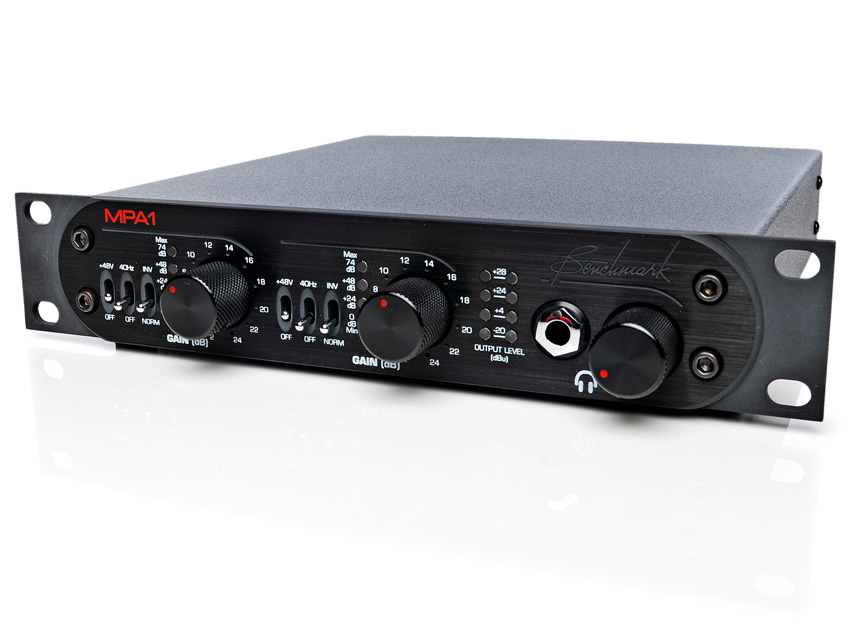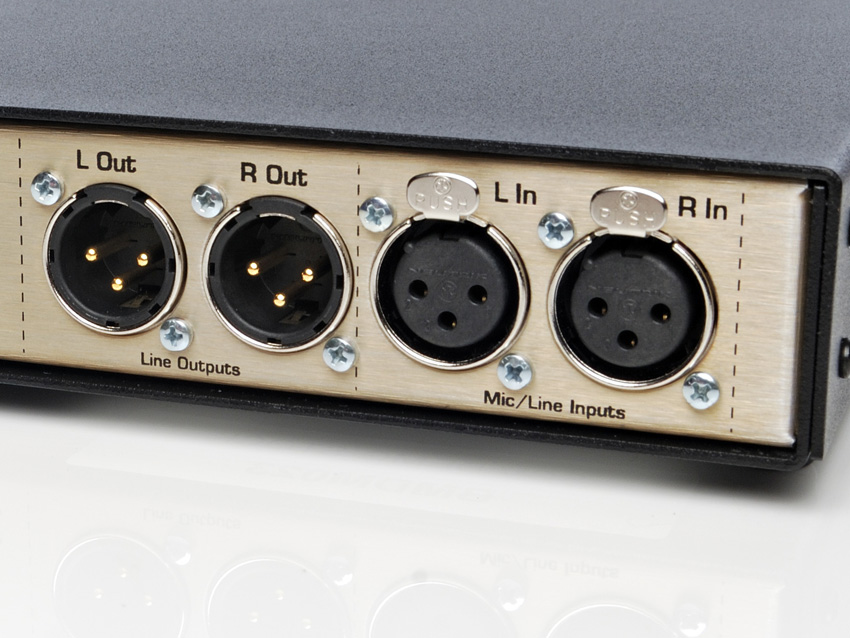MusicRadar Verdict
Uncoloured sound and masses of closely-matched gain should appeal to all audiophile engineers.
Pros
- +
Masses of gain. Clean transparent sound. High quality onboard headphone amp.
Cons
- -
Expensive. Not for those who want their sound to be coloured.
MusicRadar's got your back

Benchmark MPA1 Mic Pre

Benchmark MPA1 Mic Pre
Serious pro audio gear often carries a serious price tag, and you may struggle to understand what the high price actually delivers. Sometimes it's an established brand or circuit design, sometimes build quality or ergonomic design.
With a 30-year history and users in the broadcast, live and recording markets, Benchmark has achieved all of these things, and is probably best know for its AD and DA converter units.
However, it's not Benchmark's converters we're looking at, but the latest incarnation of its mic preamp, the MPA1.
Overview
This two-channel half rack unit epitomises Benchmark's approach, offering masses of clean gain (74dB max) from a transformerless transistor-based circuit design. The aim is maximum transparency and bandwidth with low noise, minimum distortion and excellent RF rejection.
With this in mind, there's very little in there to compromise things and options are limited to switchable 48V phantom power, 40Hz 12dB/octave rumble filter and phase reverse.
However, as an added extra, the MPA1 also includes Benchmark's HPA2 headphone amplifier. This high-current design is capable of driving headphone impedances from 30 Ohms upwards with virtually no sound degradation.
Out of the box, although compact, the MPA1 feels rugged, and due to the substantial toroidal mains transformer, pretty hefty too. As you would expect, audio is fully balanced and on XLR connectors, although you can drive unbalanced loads.
The basic functionality might lead you to believe the MPA1 uses simple internal electronics. However, there are many performance-led design features. The most obvious is the gain circuit.
"Out of the box, although compact, the MPA1 feels rugged, and pretty hefty too."
This combines a switched-resistor network design with automatic gain range switching. This means the continuously rotational notched gain control can get you all the way from 0dB to 74dB with the relevant LED showing you which gain range you've reached.
Stereo recordists will be pleased to know that this allows for inter-channel gain matching to within +/- 0.03dB. Other significant design features include Benchmark's two-stage RF filter, phantom hot-plug protection and three-frequency common-mode rejection trimming. Finally, it's worth noting that the MPA1 furthers Benchmark's reputation for extremely low inter-modulation distortion.
Summary
In use, the MPA1 sounds impressive. Testing it with a low-output ribbon mic immediately shows where this type of design shines, with amplifier noise remaining insignificant even at very high gain. Moving on to a stereo pair of phantom-powered mics and the notched gain system proves very useful.
On the downside, the unit only has basic four-LED output metering and no VU meters. Obviously this is a space issue, but at this sort of price you'd be right to feel slightly short-changed. As for the HPA2 headphone amp, it coped extremely well with our high impedance (400Ohm) Beyer DT100, producing plenty of volume with excellent clarity.
The MPA1 isn't a bells and whistles unit, so if you're after instrument inputs, adjustable input impedance or the more coloured sound of a tube stage, look elsewhere. However, for clean, high bandwidth, uncoloured sound, it's hard to beat, and audiophile recordists will love it.
Future Music is the number one magazine for today's producers. Packed with technique and technology we'll help you make great new music. All-access artist interviews, in-depth gear reviews, essential production tutorials and much more. Every marvellous monthly edition features reliable reviews of the latest and greatest hardware and software technology and techniques, unparalleled advice, in-depth interviews, sensational free samples and so much more to improve the experience and outcome of your music-making.
“A synthesizer that is both easy to use and fun to play whilst maintaining a decent degree of programming depth and flexibility”: PWM Mantis review
“I feel like that song had everything we needed to come back with”: Bring Me The Horizon’s Lee Malia on Shadow Moses, its riff and the secrets behind its tone, and why it was the right anthem at the right time
“I said, ‘Are we sure we can write a song about death?’”: The story of Mike + The Mechanics' classic No.1 The Living Years










